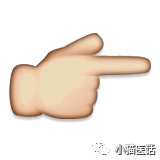
Hypertension falls under the TCM categories of “headache,” “dizziness,” and “liver wind.”
It is generally believed that the occurrence of hypertension is related to emotional distress, where anger and worry lead to liver qi stagnation, which over time transforms into fire, depleting liver yin. This results in an inability to restrain yang, causing liver yang to rise, leading to wind and fire transformation.
Alternatively, dietary indiscretion, excessive consumption of rich and fatty foods can damage the spleen and stomach, resulting in internal dampness and turbidity, which can transform into heat, scorch fluids, and produce phlegm, obstructing the meridians and disturbing the clear orifices. Aging and kidney qi deficiency can also lead to an imbalance of liver and kidney yin and yang, resulting in fire and wind transformation.
The pathological factors of hypertension primarily include wind, fire, phlegm, and stasis, with the liver and kidney being the main organs involved, the disease location being in the liver, and the root cause in the kidneys.
Recent studies on the treatment of hypertension have focused on methods such as kidney tonification, calming liver and subduing yang, calming liver and extinguishing wind, tonifying qi and activating blood, and promoting blood circulation and resolving stasis, achieving certain therapeutic effects, though results are not entirely satisfactory.
The reasons for this are mainly related to insufficient understanding of the etiology and pathogenesis of hypertension.
In clinical observations, we have noted that the onset and progression of this disease are closely related to the theory of collateral disease, manifesting as varying degrees of collateral stagnation, especially in the elderly who often have complications or comorbidities, thus requiring treatments that promote blood circulation and unblock collaterals for hypertension.
I believe that the “theory of collateral disease” is a crucial aspect of the pathogenesis of hypertension.
1. The Origin of the Theory of Collateral Disease
As early as in the “Huangdi Neijing,” the concept of “collateral vessels” was introduced. The “Lingshu: Pulse Measurement” states: “The meridians are internal, while the branches that extend horizontally are collaterals”; the “Lingshu: Meridians” also states: “All the floating and commonly seen vessels are collaterals”; and the “Suwen: Discussion on Moxibustion” details various acupuncture methods for collaterals.
Zhang Zhongjing applied this in internal medicine in the “Shanghan Lun” under the section on “Bi Syndrome.”
In the Qing Dynasty, Ye Tianshi, building on the academic thoughts of predecessors, further categorized collaterals into organ collaterals, superficial collaterals, yin collaterals, and yang collaterals, creatively proposing the concept of “collateral disease.”
His viewpoint was that “long-term illness enters the collaterals” and “long-term pain enters the collaterals,” which has had a profound influence on later generations.
He elaborated on the etiology, pathogenesis, and treatment methods of collateral disease in various sections of the “Clinical Guidelines,” marking the formal establishment of collateral disease theory.
In recent years, with the extensive research of TCM on chronic and difficult diseases, the theory of collateral disease has gained increasing attention, and understanding of it is deepening.
Currently, the common patterns exhibited by collateral disease in the occurrence and development of various diseases are being recognized, but whether there is an inevitable connection between it and hypertension remains to be studied.
We can explore the physiological and pathological aspects of collaterals to investigate the correlation between this theory and the pathogenesis of hypertension, thus seeking effective methods for the prevention and treatment of hypertension.
2. The Physiological Characteristics of Collaterals
Collaterals are an organic component of the meridian system, branching off from the meridians. Each collateral system includes major collaterals, connecting collaterals, entangled collaterals, subsidiary collaterals, and superficial collaterals.
The distribution of collaterals follows the meridians, branching off horizontally, from large to small, forming a tree-like and net-like structure, widely distributed among the organs and tissues, creating a network system that permeates the entire body, compensating for the linear distribution limitations of the meridians.
Wang Qicai provided a detailed differentiation between collaterals and meridians, proposing that collaterals are superficial while meridians are deep, collaterals are horizontal while meridians are vertical, collaterals are fine while meridians are coarse, and collaterals are numerous while meridians are few, summarizing the distribution characteristics of collaterals.
Collaterals have functions such as nourishing qi and blood, intermingling fluids and blood, connecting the nutritive and defensive qi, and ensuring the circulation of meridian qi.
Collaterals are an important structure for the overall coordination and connection of internal and external organs, serving as a bridge and hub for the distribution of qi, blood, and fluids. Only when the function of collaterals is normal can yin be balanced with yang, qi and blood be harmonious, and organ functions be normal, maintaining the body in a dynamic self-regulating system.
The conditions for collaterals to maintain this physiological function are unobstructed collateral pathways, unimpeded collateral qi, and sufficient qi and blood within the collaterals.
Additionally, due to their unique distribution characteristics, collaterals can resist external pathogens and reflect the transmission of diseases.
Collaterals exhibit bidirectionality and overflow perfusion characteristics, allowing qi and blood from the meridians to overflow into the collaterals, which then distribute to the organs and muscles, and also allow qi and blood from the organs and muscles to permeate into the collaterals and perfuse into the meridians.
Collaterals are similar yet distinct from the microcirculation described in modern medicine in terms of distribution, structure, and function.
Collaterals maintain the bidirectional flow and perfusion characteristics of qi, blood, and fluids, which is similar to the role of capillary networks in microcirculation, while microcirculation plays a crucial role in maintaining normal blood circulation and stable blood pressure.
3. The Pathological Changes of Collaterals and the Formation of Hypertension
Pathological changes leading to collateral obstruction and impaired circulation of qi, blood, and fluids due to various factors are collectively referred to as collateral disease.
The “Clinical Guidelines” also states: “Initially, qi stagnates in the meridians, but over time, blood is injured and enters the collaterals”; it also states: “Heat pathogens ascend and first enter the lung collaterals,” and “Needles and knives injure the meridians and collaterals.”
This indicates that the location of collateral disease is in the blood, and the causes of collateral disease include external pathogens, falls and injuries, or internal injuries from emotional distress, overindulgence, and fatigue.
The pathological evolution occurs due to prolonged illness, deficiency of righteous qi, emotional stagnation, or invasion by external pathogens, where evil qi transitions from qi to blood, ultimately leading to fluid stagnation and blood stasis, resulting in turbid phlegm and toxic stasis obstructing the collaterals, manifesting as collateral disease.
The pathogenesis can be summarized as collateral stagnation, collateral deficiency, collateral toxicity accumulation, and collateral injury.
Clinical manifestations are characterized by complexity and difficulty in resolution.
Patients with hypertension often experience blood stasis and collateral obstruction due to liver qi stagnation, and may also have yin deficiency below and yang rising above, leading to an imbalance of yin and yang, causing qi and blood to flow in reverse, resulting in blood stasis and collateral obstruction; or phlegm and fluids transforming into phlegm, obstructing the circulation of qi and blood, causing blood stasis and collateral obstruction.
In this way, collateral stagnation plays a significant role in the pathogenesis of hypertension.
Hypertension often has a hidden onset and a prolonged course.
Clinically, there is a distinction between primary and secondary hypertension, with primary hypertension occurring in the elderly attributed to physical deficiency, while secondary hypertension in younger individuals is often attributed to phlegm-damp turbidity (obesity and hyperlipidemia are common); secondary hypertension is often seen following chronic diseases such as diabetes and kidney disease, aligning with Ye Tianshi’s theory that “long-term illness enters the collaterals” and Wang Qingren’s theory that “long-term illness entering the collaterals leads to stasis.”
In other words, the accumulation of high blood lipids, high blood sugar, and high urea produced by these diseases within the body falls under the category of turbid toxins in TCM, which cannot be expelled through the normal exchange function of the collaterals, leading to accumulation and obstruction in the collaterals, resulting in an imbalance of yin and yang in the body, ultimately leading to this disease.
Investigating the pathogenesis of hypertension, its relationship with collateral disease in terms of deficiency (blood deficiency and qi deficiency in the collaterals) and excess (blood stasis and internal accumulation of turbid toxins) is fundamentally consistent, indicating that hypertension is interrelated with the collaterals in terms of disease location.
Current research suggests that imbalances in self-regulation of circulation and increased tension in small arteries and veins are significant causes of hypertension, indicating the role of microcirculation in this disease.
The pathological basis of collateral disease lies in endothelial damage and the dysregulation of interactions between blood vessels and blood components, which are also the foundational factors leading to pathological changes in hypertension.
However, the concept of collaterals in TCM is not limited to the concept of microcirculation.
It encompasses the regulation of blood flow throughout the body, control of blood pressure, as well as the regulation of the nervous system, endocrine system, and the normal physiology and functions of neurotransmitters, cellular metabolism, and electrolytes, all of which are directly related to the pathological mechanisms of hypertension.
In terms of pathological changes, hypertension often accompanies local blood stasis, hemorrhage, tissue edema, and microaneurysms, which align with the clinical manifestations of collateral disease.
Clinically, patients with hypertension often exhibit signs such as dark red lips, dark red or purplish tongue body, and cyanotic sublingual collaterals, indicating peripheral circulation disorders, which are manifestations of collateral distribution and collateral disease.
Patients with “long-term illness entering the collaterals” often show varying degrees of the above manifestations on their tongue, which worsen with the progression of the disease, proving that hypertension and collateral disease have consistency in clinical manifestations.
From the perspective of the occurrence and development of hypertension, if the condition is not treated promptly and effectively, the affected organs are often the heart, brain, kidneys, and fundus, which are rich in blood flow;
these organs are precisely where the collaterals converge, and whenever collaterals are mentioned, they cannot be separated from these organs. Thus, it can be inferred that collateral disease is an important link in hypertension, and it can also be said that hypertension involves “turbid toxins in the collaterals.”
In summary, the theory of collateral disease reflects the general laws of disease development.
Hypertension has an inherent connection with “collateral disease” in its mechanisms of occurrence and development. Starting from the collaterals to conduct in-depth research on this disease will add new theoretical content to TCM’s understanding of the pathological mechanisms of hypertension and provide theoretical and objective evidence for finding effective methods for the prevention and treatment of hypertension.
To be continued……
Text from “Weng Weiliang’s Clinical Experience Compilation,” authored by Weng Weiliang, published by China Medical Science and Technology Press


Copyright Statement: We emphasize sharing
Image and text source: Internet
Copyright belongs to the author
If there is any infringement, please contact for deletion
Images | Internet
 Please follow
Please follow 

Old Man’s Ramblings Channel
Public Account: Qi Qi’s Idle Talk
 Please follow
Please follow 

Cat Medical Talk Qingdao Station
Public Account: Pingdu Taide Hospital


